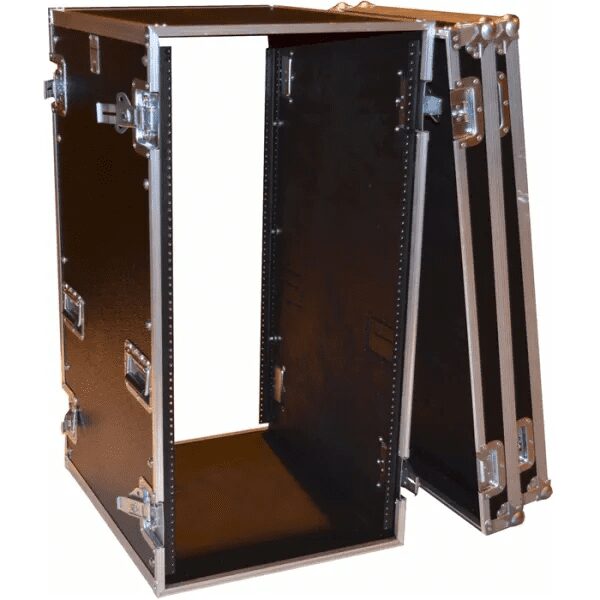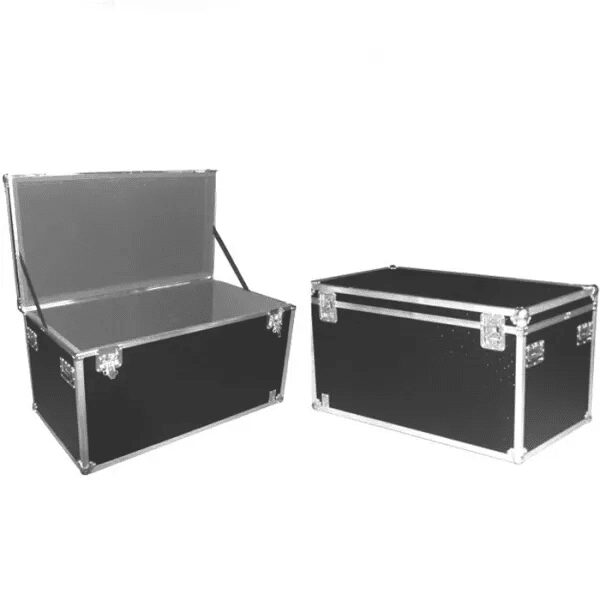Learn More About Our Protective Packaging Products

Testing Performed
ATA Case Tests Performed for Shipping Cases and Militarized Cases That Insure ATA Compliance and Military Testing Compliance by Various ASTM Procedures
“ATA” Tests Performed
Vibration Test (unsecured) Method 514.2, Proc. IX, Case Serial # 59615
Water Spray Test, ASTM Proc. D951-51, Case Serial # 59628
Transit Drop Test, Method 516.2, Proc. II, Case Serial # 59612
MIL-STD. 810 C, D, & E Tests Performed
Vibration Test (secured) Method 514.2, Proc. X, Case Serial # 59635
Shock Test, Method 516, Proc. II, Case Serial # 59600
High Temperature Test, Method
Low Temperature Test, Method 502.1, Proc. 1, Case Serial # 59625
Temperature Shock Test, Method 503.1, Proc. 1, Case Serial # 59609
Compression Test, Proc. 88514-2, 20,000 psi, Case Serial # 59641
Fungus Resistance Test, Method 508.1, Proc. 1, Case Serial # 59629
Salt/Fog Test, Method 509.1, Proc. 1, Case Serial # 59627
Humidity Test, Method 507.1, Proc. 1, Case Serial # 59627
Surface Burning Characteristics Test, ASTM Proc. E-84, Test #t-7172-5
Smoke Density Test, ASTM Proc. E-662, Test #S-678
Surface Flammability Of Materials, ASTM Proc. E-162, TEST #RP-1095
Results
Star Case Passed- no apparent damage
Star Case Passed- no apparent damage
Star Case Passed- no apparent damage
Results
Star Case Passed- no apparent damage
Star Case Passed- no apparent damage
Star Case Passed- no apparent damage
Star Case Passed- no apparent damage
Star Case Passed- no apparent damage
Star Case Passed- no apparent damage
Star Case Passed- no apparent damage
Star Case Passed- no apparent damage
Star Case Passed- no apparent damage
Star Case Passed- no apparent damage
Star Case Passed- no apparent damage
Star Case Passed- no apparent damage
These tests were performed by Gaynes Testing Laboratories of Chicago, IL., Truesdail Laboratories of Tustin, CA., and other testing labs operated by DFPA (Defense Fire Protection Agency), and the HPMA (Hardwood Plywood Manufactures Association) in strict conformance to all applicable procedures called out in the Air Transportation Association Specification 300, Category 1, Military testing procedures applicable to MIL-STD. 810 C, D & E, and various ASTM testing specifications. For additional information on these test procedures and the results of the same performed on Star Cases, please submit your request in writing to Star Case Manufacturing Company.
What Is ATA?
This is precisely why we call Star Cases the “Ultimate in PRODUCT Protection.”
Our cases are designed and built to protect their contents – your expensive and often irreplaceable equipment, products, works of art, fragile electronic devices, etc. However, your case is expected to get dirty, dented, scraped, scratched, and gouged. Our primary concern is the well-being of your equipment. After all, isn’t that why you purchased your Star Case(s) in the first place? Failure (damage) at a given point is highly desirable, especially if it occurs after forces exceed that which is expected or anticipated.
Failure of the package around your equipment will typically dissipate and absorb the trauma to such an extent as to reduce or eliminate any damage to your payload. The alternative is to have a case that simply won’t “give” when forces become too extreme. The result is a container that doesn’t “give” under undue stress and thus a container that transmits the “normal and expected” forces to the contents therein (Not a good idea!).
Our cases are built in strict conformance to the ATA (Air Transport Association) specification 300, category 1 testing procedures that simulate 100 common carriers (air, land, and sea) shipments. All “normal and expected” rough handling environments were taken into consideration when the ATA first evolved this specification and established its vibration test, drop test, and moisture tests criteria guidelines.
Granted, a specification is only as good as the guideline testing from which it was established.
The ATA specification calls out “real world” scenarios such as:
- Being dropped numerous times from heights up to 36” on all surfaces, corners, and angles.
- Vibration that would be experienced traveling cross country in the belly of an airplane or on the bed of a truck bouncing down the highway at 70 mph.
- Or those situations where your cases are left sitting on the tarmac at the airport during a driving rain or snowstorm.
The testing performed does not cover damage that might be incurred following:
- A drop from the third floor (or any other floor for that matter) of a building.
- Handling by a forklift operator that’s pushing (not lifting, mind you) your fully-loaded cases with the tip ends of his fork blades.
- A vehicle mishap where your case & contents end up floating downstream in a flooded river bed.
Protection for Your Payload
Here’s what we do at Star Case and have done successfully since our inception in the early 70s. We design and build our cases as compactly as possible without sacrificing protection for your payload.
We design and build our cases to “give” at a certain level of stress such that the case will fail in a progressive fashion from the outside in such a way that your payload will remain safe and protected to the absolute last minute. After all, what good is a protective shipping case if IT survives the exaggerated mishandling (handling that exceeds what the ATA deems to be “normal and expected”) and the case contents don’t survive?
That reminds me of an advertising theme I saw once in an industry publication. Pictured in the ad was a large shipping case laying on its side at the foot of a theatrical stage. A gentleman was standing next to the case with his leg wrapped in a cast and bandages wrapped around his head.
I think he was supported on crutches as well. At any rate, there was a caption next to this fella’s head that read something like this: “While setting up for a stage production, I had to climb inside this case to retrieve some items that were out of reach. All of a sudden, the case that was teetering on the edge of the stage, fell, with me in it, to the concrete floor 5′ below. I’m so glad we decided to ship our valuable equipment in “XYZ cases” – just look how well it survived a 5′ drop from this stage?”
Needless to say, we focus on protecting the contents in the Star Case.

ATA Compliant Shipping Cases
We take extreme pride in touting the fact that we offer thoroughly ATA-compliant shipping cases. Every type and grade of ATA case we build has been tested (with payloads) by independent testing laboratories to all the testing procedures called out in the ATA specification 300, category 1. Performance of these tests does not come cheaply – believe me, they cost dearly. And, the majority of our competitors in the heavy-duty shipping case industry simply claim that they are ATA compliant and have no substantiation to back it up (they haven’t spent the money in testing to prove their cases can survive the stringent ATA criteria, like we have, ask for proof of a Test Report. To compare please visit Star Case Testing Performed to review our results).
Just ask yourself, if it wasn’t a federal law that all manufacturers of electrical devices being sold on the U.S. open market be UL (Underwriters Laboratories) rated, don’t you think most (if not all of them) would forgo these very expensive products submissions and subsequent tests?
Unfortunately, the ATA specifications are merely guidelines established by the Air Transport Association to establish criteria for rating the airworthiness and level of shipping strength of various types of shipping containers. Testing their parameters and suggestions is a requirement only to the commercial airline industry (spare parts, avionics, oxygen bottles, etc.) and not a requirement for the rest of us.
When selecting your next ATA-compliant shipping cases be sure to think about what we’re saying here. In the following order of preference, when arriving at your trade show site, your product demonstration, sales meeting, field assignment, or other destination:
- Your case and all contents arrived safely and intact. This is the preferred, and most common, scenario.
- Your case and contents arrived safely however the case was a bit worse for wear. This is the preferred, but after time, a common scenario.
- Your case arrived damaged; however, the contents were in perfect working order. In the real world, this scenario occasionally happens. Be satisfied you spent your hard-earned money wisely in that your case performed to such an extent as to render your contents undamaged.
- The case and contents were badly damaged. Sometimes, in transit, 3rd-floor building drops, floats down raging rivers, or non-caring forklift operators take over, and there’s nothing short of titanium and 6” of foam that will change the outcome.
Nevertheless, Star Cases are very, very cheap insurance, indeed!
